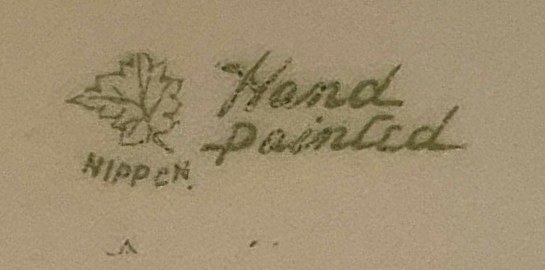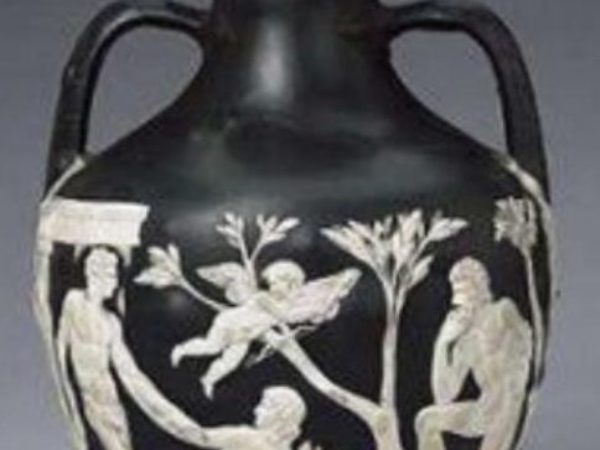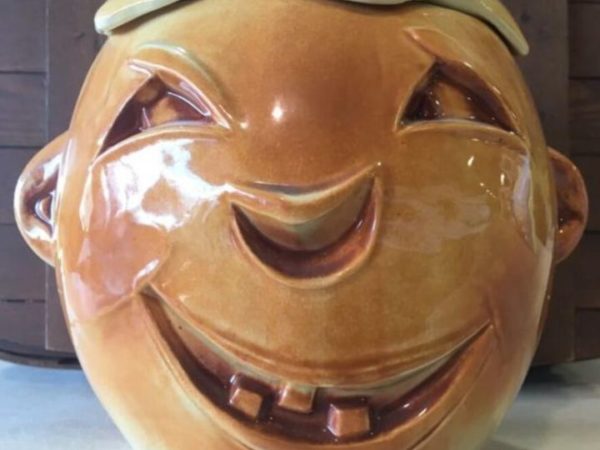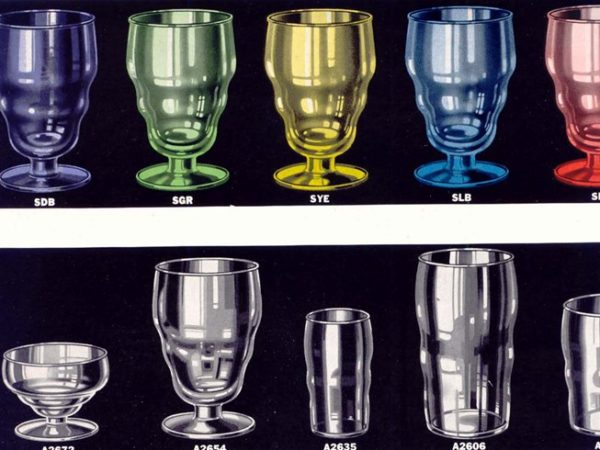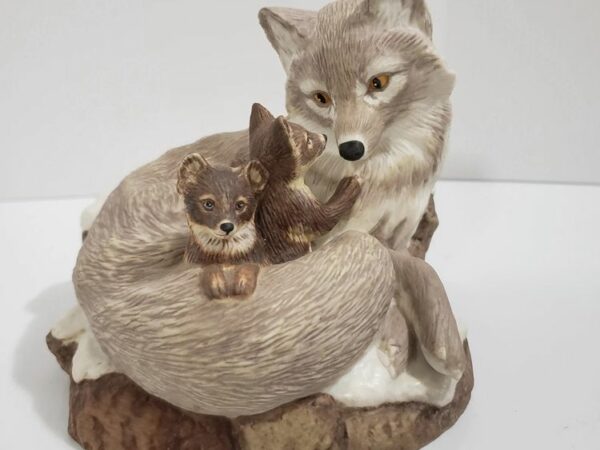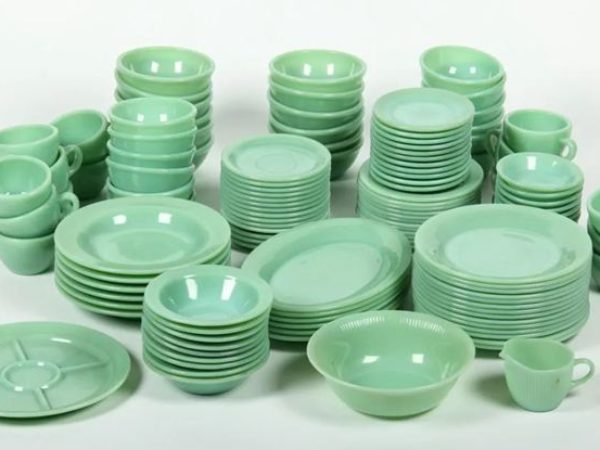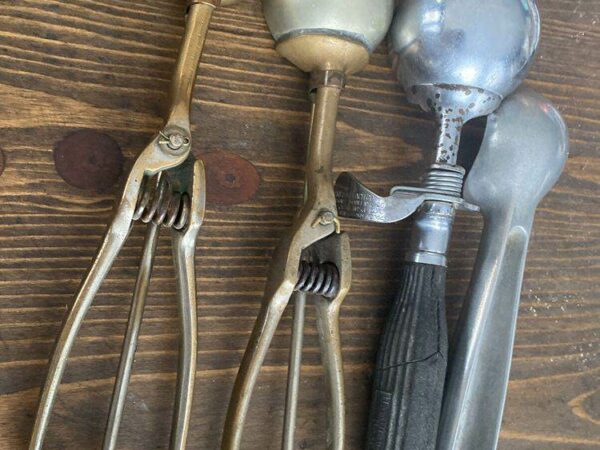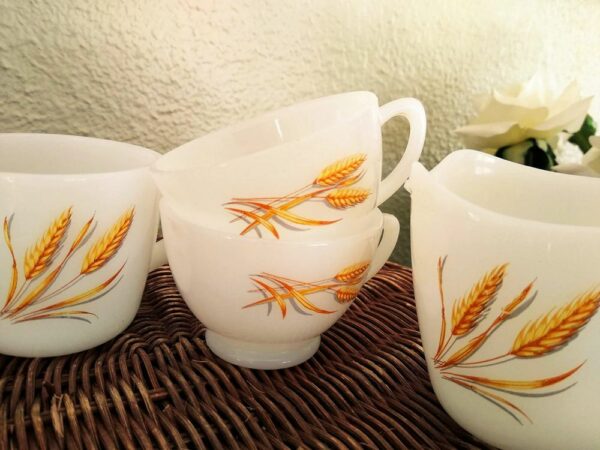Nippon means ‘MADE IN JAPAN’. They rose to fame because of their unique designs, rich historical background, and ability to seamlessly tell stories coupled with their affordability and sustained quality. Getting a Nippon piece means getting more for less.
Some highly sought Nippon vases sell for $1000-$6000. A Coralene Vase sold for $1,175 at an auction. It was closely followed by the Moriage ware which went for $987.50, and a Urns that auctioned for $628.75
In this article, you’ll find essential tips on identifying Nippon vases, understanding their value, and properly caring for your pieces. But before you get to explore all of that we’ve curated a list of the ten most valuable Nippon Vases you can find in the world today.
Table of Contents
The 10 Most Valuable Nippon Vases Around
These prices are sourced from online stores, antique websites, and collector’s lists. Please note that these prices may vary due to market forces and personal preferences.
No. |
Name |
Release Date |
Price |
1 |
Nippon Noritake Queen Louise Portrait vase |
1890 |
$4,720.00 |
2 |
Nippon Coralene Porcelain Coral Red Handle Vase |
1920 |
$1,500 |
3 |
Nippon Wisteria Coralene Vase |
1909 |
$1,299 |
4 |
Nippon I.E & C Co Porcelain Vase |
1905 |
$1,020 |
5 |
Nippon Morimura Vase |
1910-1912 |
$458 |
6 |
Nippon Moriage Double Handled Vase |
1900-1919 |
$445.51 |
7 |
Nippon Floral Coralene Moriage Vase |
1909 |
$329.28 |
8 |
Nippon Ewer Vase |
1891-1912 |
$344.99 |
9 |
Nippon Handled Vase with Rose |
1800 |
$285 |
10 |
Nippon Double Handle Maple Leaf and Cabbage Rose Vase |
1891 |
$174.95 |
1. Nippon Noritake Queen Louise Portrait vase
Price: $4,720.00
Release Date: 1890
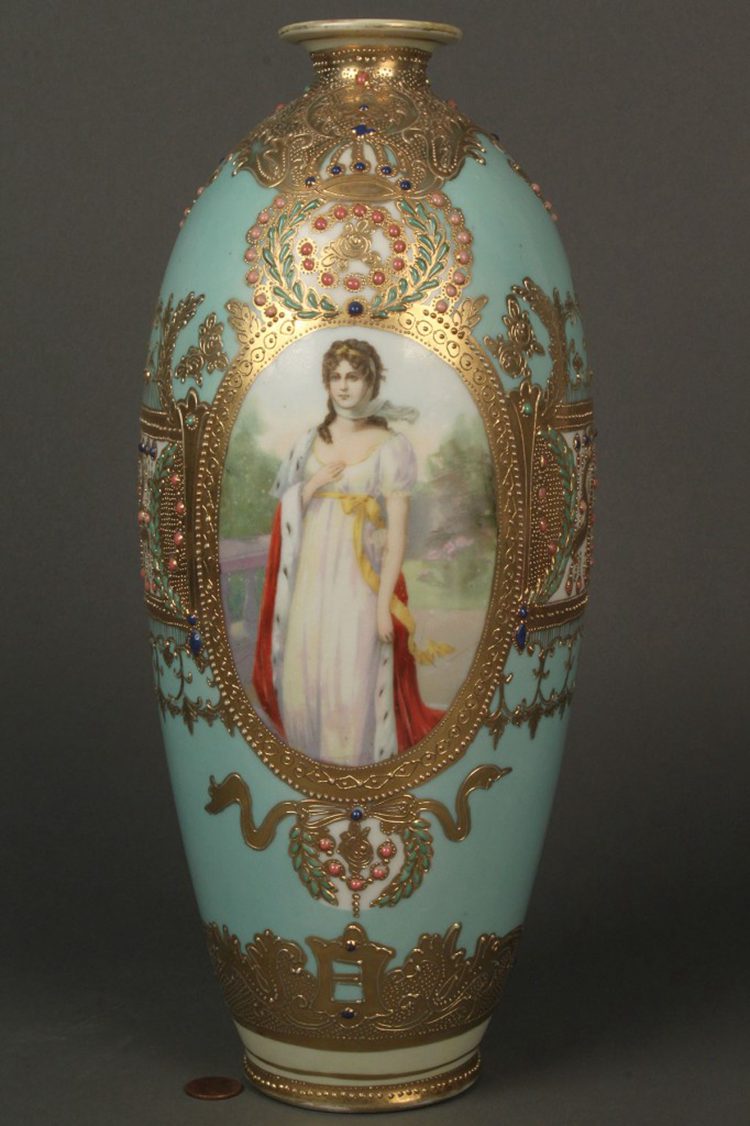
This rare portrait Moriage vase is a 14-inch beauty designed in 1890. Its sky-blue background, yellow gold raised enamel detailing and well-laid beads makes it a sight to behold.
A painting of Queen Louise of Prussia in her royal white regalia sits elegantly on the body of this $2,995 tastefully designed vase.
2. Nippon Coralene Porcelain Coral Red Handle Vase
Price: $1,500
Release Date:1920
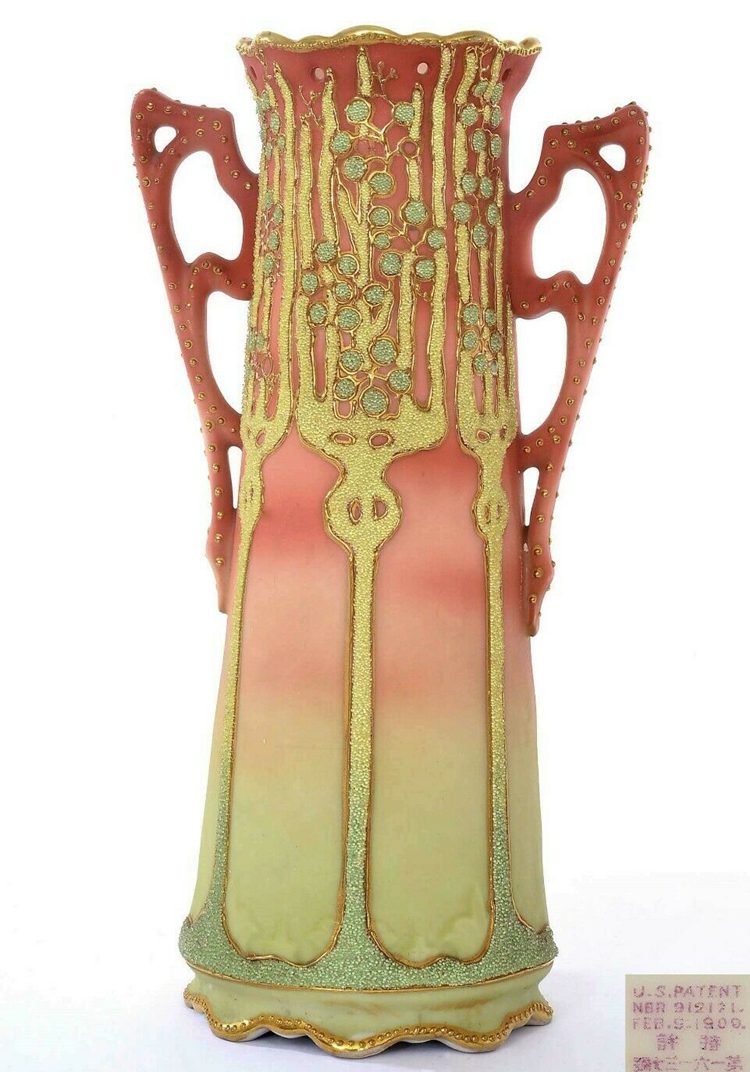
Standing at 9 inches tall, this Coralene finished $1,500 vase is a lovely sight to behold. From its exciting background hue in the coral shade to the crusty trident-shaped raised gold and blue detailing. The body gives a rough feel when touched.
It spots an attractive red handle makes for extra support when held and the traces of gold trimmings on the lips and base of the vase complete the exquisite craftsmanship of this piece.
3. Nippon Wisteria Coralene Vase
Price: $1,299
Release Date: 1909
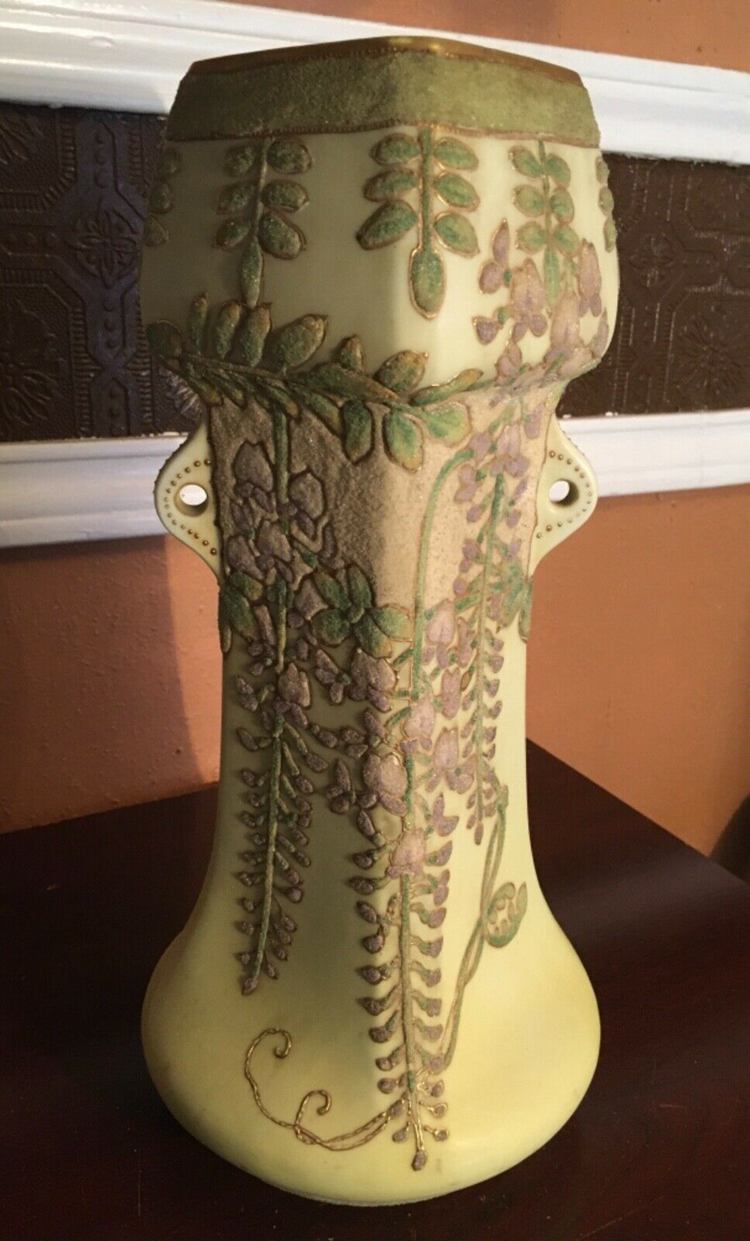
This rare 15 inches vase has a solid cream-colored background with intricate pink, gold, and green raised detailing. The tiny Coralene clear glass beads give the surface a rough feel for extra grip. There are extra gold details on the lips of the vase, and it sells for $1,299.
4. Nippon I.E & C Co Porcelain Vase
Price: $1,020
Release Date:1905
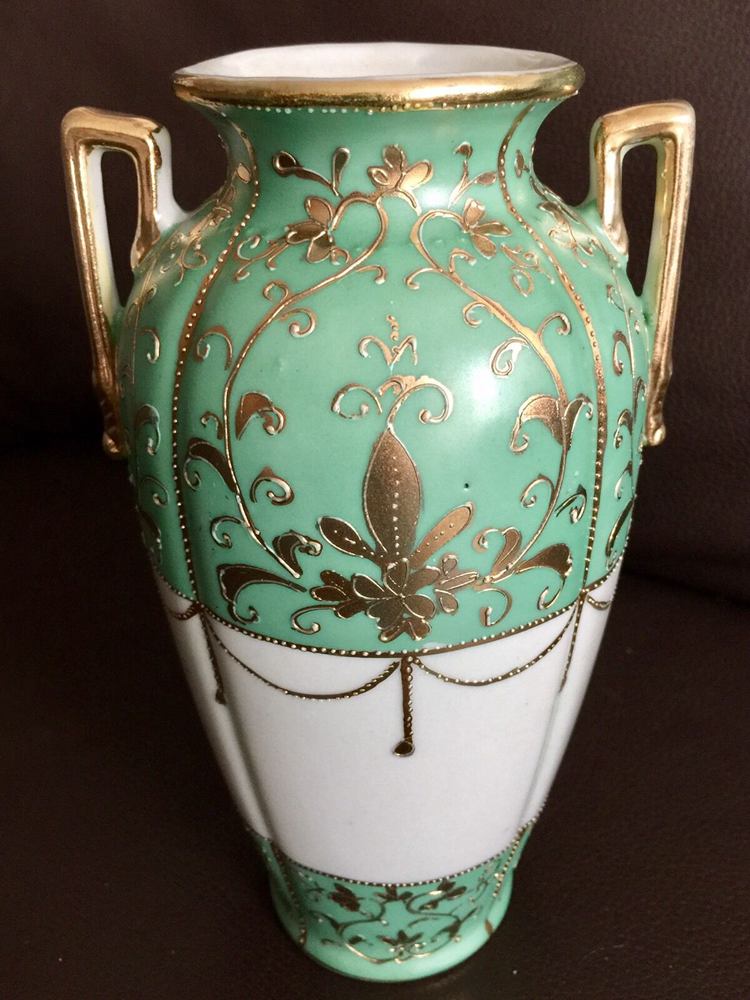
Standing elegant in mint green and white is the Nippon I.E & C Co Porcelain vase. This beauty stands tall at 7.5 inches with gold trimming on the lips and ears of both handles by the sides.
Also, you can see the raised enamel gold detailing on the body of this vase. It was produced in 1905 and retailed for $1,020.
5. Nippon Morimura Vase
Price: $458
Release Date: 1910-1912
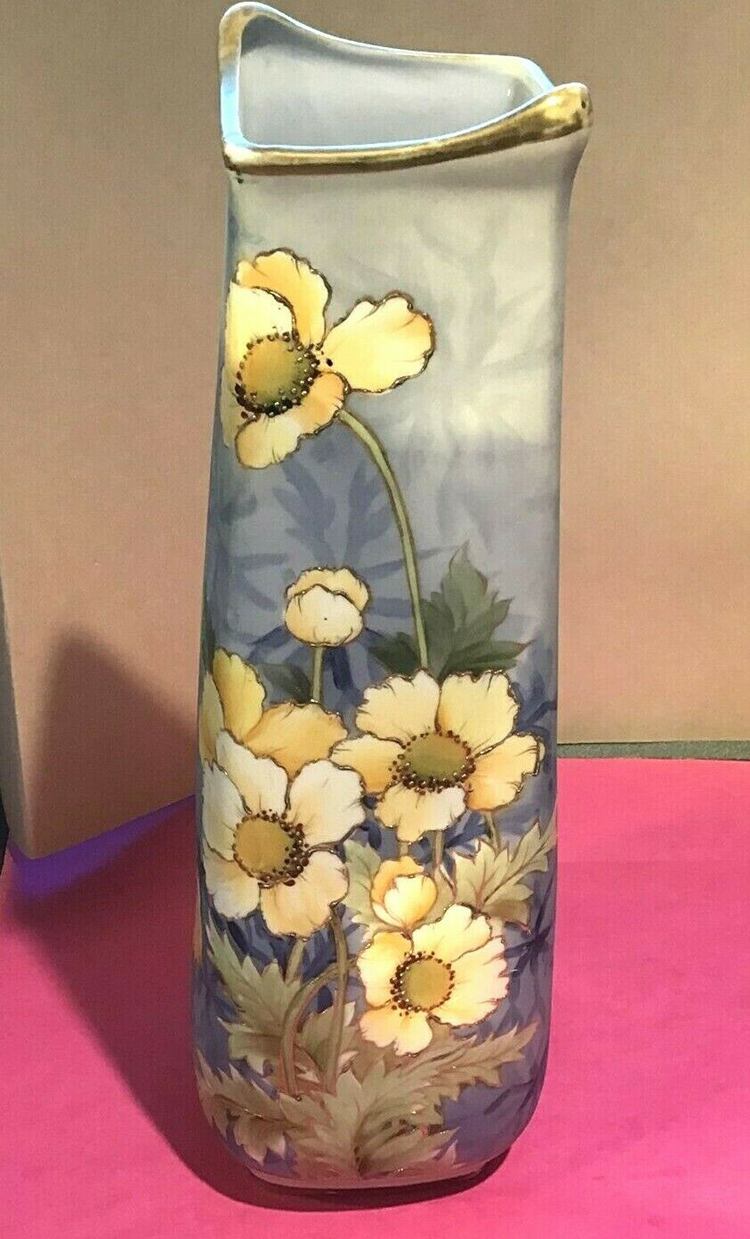
The shape of this 13 inches tall vase is one eye-catching feature you won’t be able to resist. It was designed by the Morimura brothers circa 1910-1912. There’s a blue background with white poppies, floral details, foliage on the vase’s body, and gold-trimmed lips.
The stunning piece retails for $458.
6. Nippon Moriage Double Handled Vase
Price: $445.51
Release Date: 1900-1919
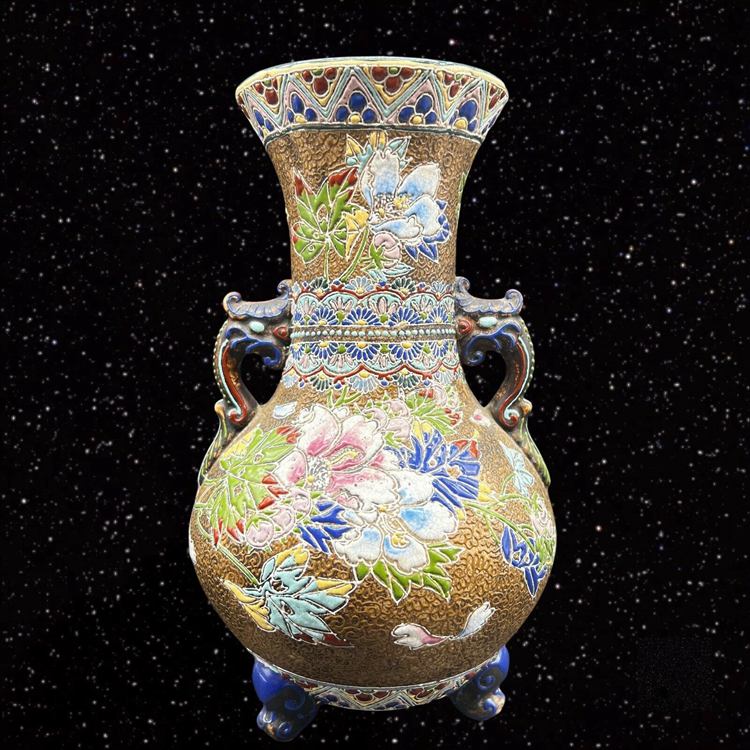
A true Moriage classic, this vase features vibrant floral designs in shades of pink, blue, and tints of green. It’s a union of different patterns on one raised enamel surface. There’s also solid gold detailing on both handles by the side of this piece, and it retails for $445.51.
7. Nippon Floral Coralene Moriage Vase
Price: $329.28
Release Date:1909
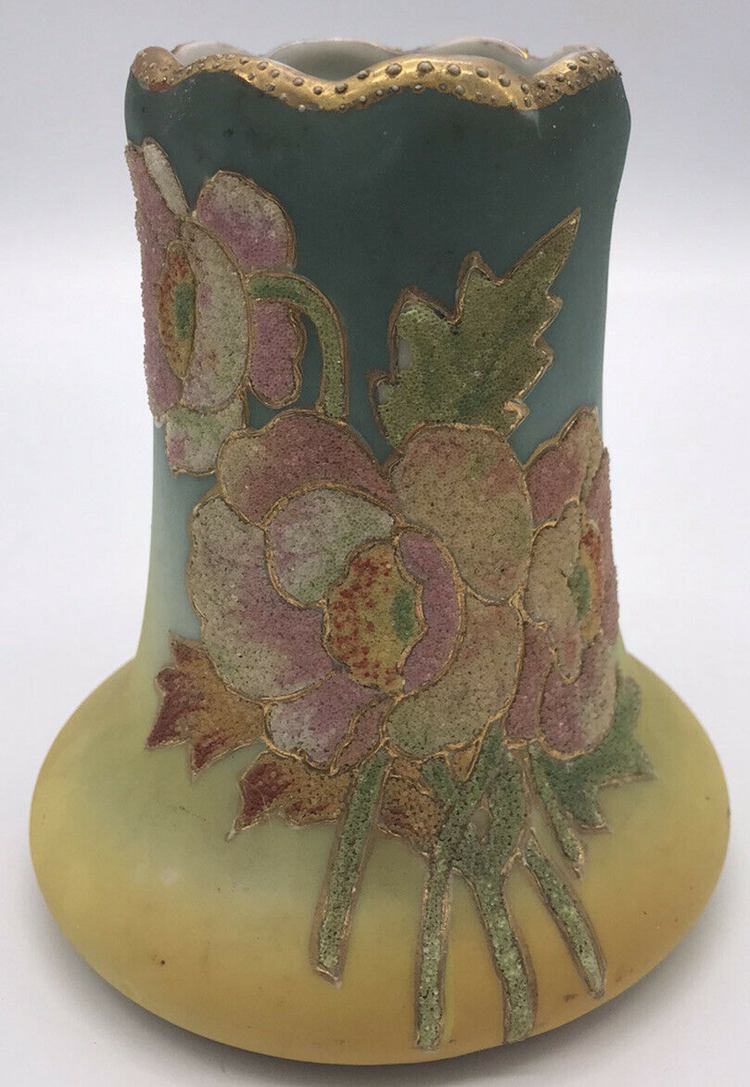
This unique shaped vase features a solid cream and teal green colored background, upon which lies Coralene floral patterns complimenting pink and gold colors. The ear of the vase shines in gold and jeweled decorations, and it sells for $329.28.
8. Nippon Ewer Vase
Price: $344.99
Release Date: 1891-1911
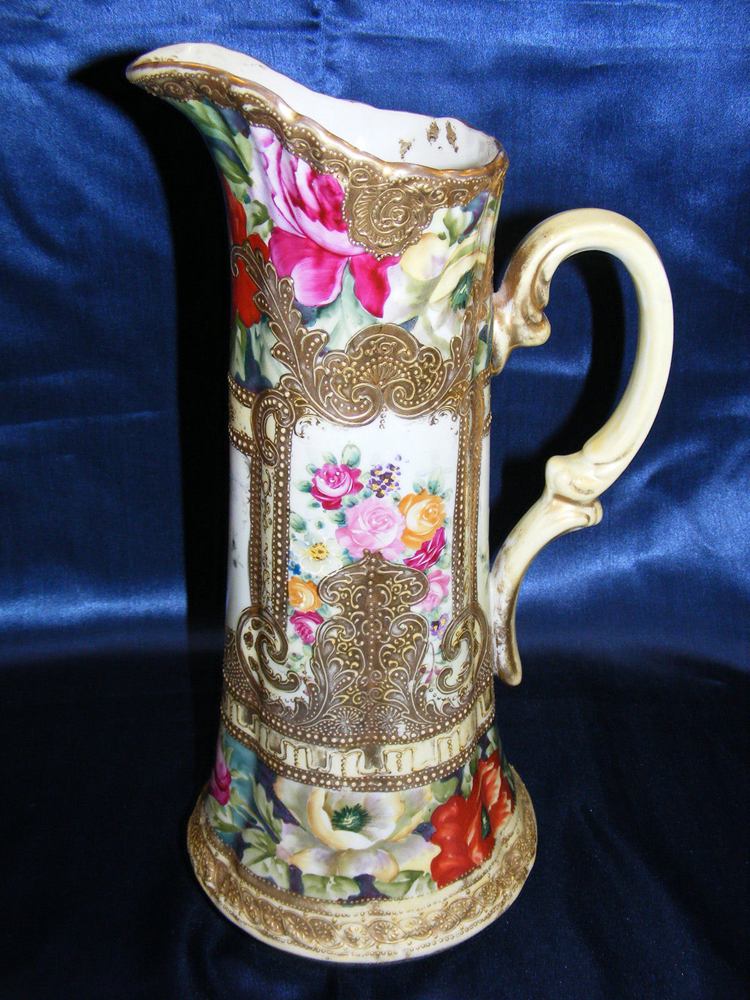
As a 14 inches hand-painted Moriage masterpiece, this vase spots beautiful floral designs with heavy gold beadings on the body. In addition, it has raised enamel details and gold trimming on the lips and handle. It was designed circa 1891-1911 and retailed for $344.99.
9. Nippon Handled Vase with Rose
Price: $285
Release Date: 1800
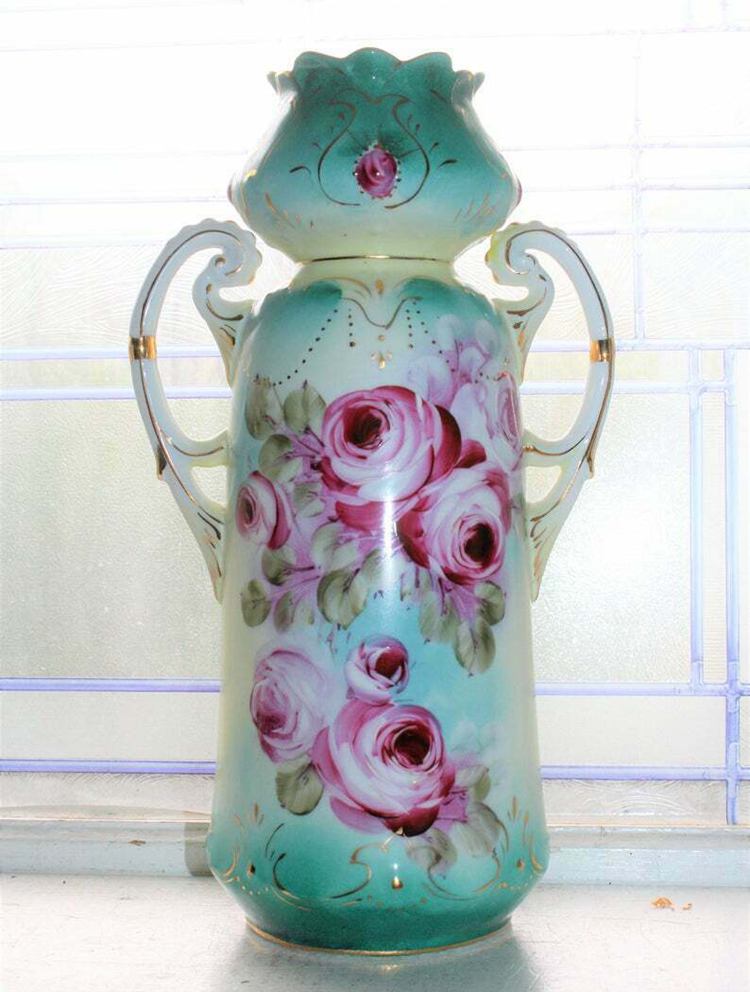
This is a beautiful Nippon vintage vase designed in the 1800s. It’s a mint green colored piece with hand-painted patterns of wild pink roses and extra gold trimming on the lips and the handles. It retails for $285.
10. Nippon Double Handle Maple Leaf and Cabbage Rose Vase
Price: $174.95
Release Date: 1891
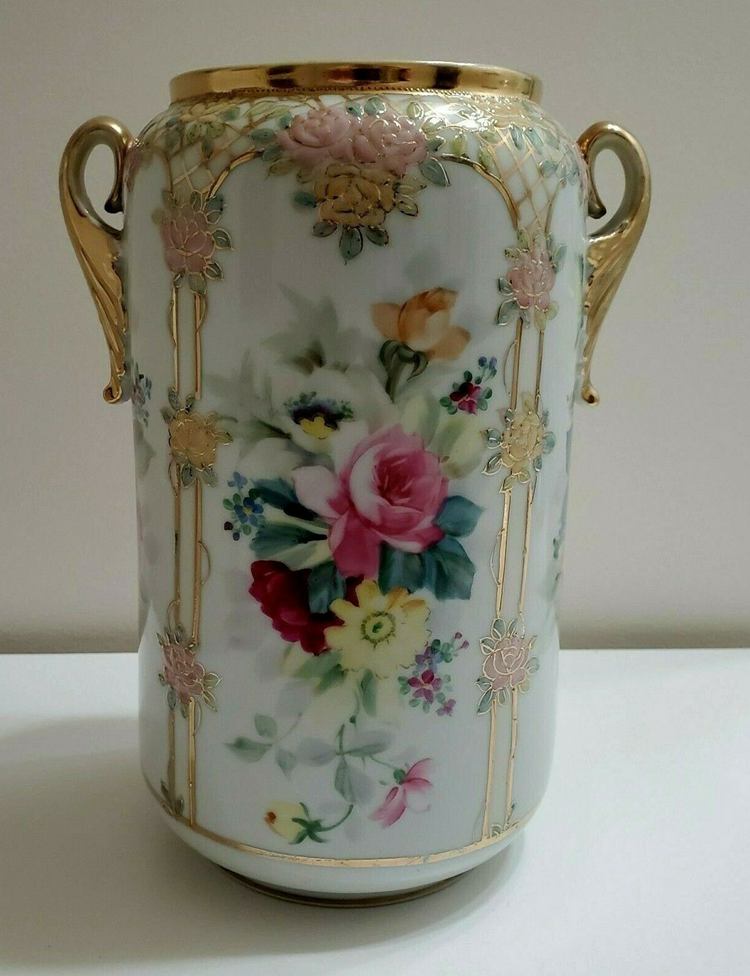
This cylinder-shaped vase has a white hand-painted background with floral details in pink roses, mint green cabbage roses, and maple leaves. It’s tapered with gold details on the handle and the lips of the vase.
Sticking to the Coralene theme, different raised patterns surround the primary floral details to create a perfect unison of beauty and elegance on this $174.95 vase.
History of Nippon Vases
Nippon vases earned their name through the McKinley Tariff Act of 1891, which pronounced that all goods imported into the United States must be marked with their country/place of production. Hence the name Nippon which meant Japan.
This act flourished well into 1921 when the United States reviewed the trade rules, and the McKinley board then decided that these items bore the marks of their place of origin.
Still, only in the English language to aid quick and easy identification, Nippon was effectively replaced with Japan on these pieces.
Nippon vases were affordable and available to the western populace; they were made for western use anyways and even adopted western techniques in their production.
Most of the wares featured beautiful gold trim detail and complex designs with colorful and tasteful floral highlights. Vendors sold them in budget-friendly retail stores such as Montgomery ward and sears.
They were popular in America due to their low costs, cheaper than porcelain pieces imported from Europe and England. However, this low cost doesn’t equate to low quality; it simply meant that the Japanese workers were overworked and underpaid.
How to Determine the Value of Nippon Vases
You can determine the true worth of a Nippon piece by paying attention to the condition of the vase and the decoration, the size, the quality of the porcelain used, and the age.
By their artistic styles
Collections like the Coralene and Moriage decorated vases are highly sought after and very collectible due to the techniques adopted in producing them, which we’ll explain in detail below.
The Coralene pieces feature a solid cobalt backdrop accompanied by painted hues with elevated design properties, then finally coated with clear transparent glass beads, which are held onto the body of the vases during the final firing process.
Moriage wares featured jeweled effects; the artist placed dots together to get a raised enamel decoration on the surface of a Nippon porcelain item, just like piping icing on top of a cake.
By their decoration
Nippon pieces are at the mercy of their decorative elements. A Nippon vase with elaborate and heavily detailed decorations on its body is worth more than those with little or no adornments on them.
By their marks
Nippon vases with the green-colored NIPPON marks cost more than those with the JAPAN embossing. The price difference is simply due to the age factor. NIPPON embossed vases are the earliest models pre-1921, while JAPAN embossed vases are modern.
By consulting appraisers
These are professionals skilled in identifying and observing materials used to produce art and other valuable items and ultimately put a price on it based on their concluding results. Consult the service of one if you’re still confused about the true worth of your Nippon vase.
How to Identify Nippon Vases
Here’s a list of things you should note when trying to verify the authenticity of Nippon vases in your collection or around you.
To begin with, you must get familiar with the three types of imitation Nippon vases available: Reproductions, Fantasy Pieces, and Outright Fakes.
Learning to spot the three fakes
Outright fakes are not prevalent in Nippon vases or any existing known shapes or patterns. The patterns on these pieces were never officially rolled out by the production company. They are characterized by uneven and poor finishing.
Reproduction pieces imitate existing Nippon molds; if you don’t pay extra attention, you’ll fall victim to them due to their exact resemblance to authentic Nippon vases. In addition, these reproduced items usually come in bright colors, have an unreal smooth finish, and barely have signs of wear.
The Fantasy pieces were, in fact, never produced throughout Nippon’s timeline. Items such as kerosene lamps, wine coolers, and Victorian shoes with Nippon stamps are outright fake. The gag is they’re even available for purchase online, so take extra care when acquiring one.
Using the light test
Lift your Nippon Vase in the direction of bright light and look through it. Original Nippon items are transparent and of good quality, the perfect balance between chunky and light. Cheap vases are usually very heavy and opaque.
Examine the Finish
Original Nippon vases have a glazed finish and are even with a slightly elevated enameled feel. The glazed finish extends down to the insides of the vase.
Most Nippon vases are hand-painted and have a very light bronze feel due to age wear; a feature reproduced piece doesn’t have; they’re always shiny and superficial.
By their trademark
Any vase made in Japan between 1891-1921 is automatically a Nippon vase. This knowledge will save you the stress of racking your brains searching for proof. Instead, check for the Nippon inscription on the body or base of the vase.
If it’s marked “Japan”, the artists created it after 1921 when the custom law reversed its decision on the previous Nippon moniker. Check below for examples of marks used by NIPPON that you may find on their pieces.
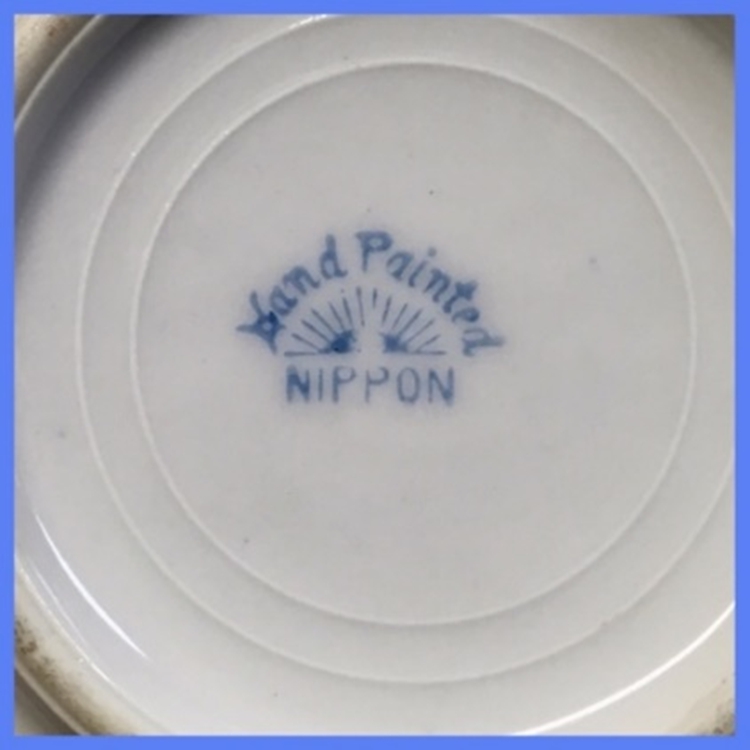
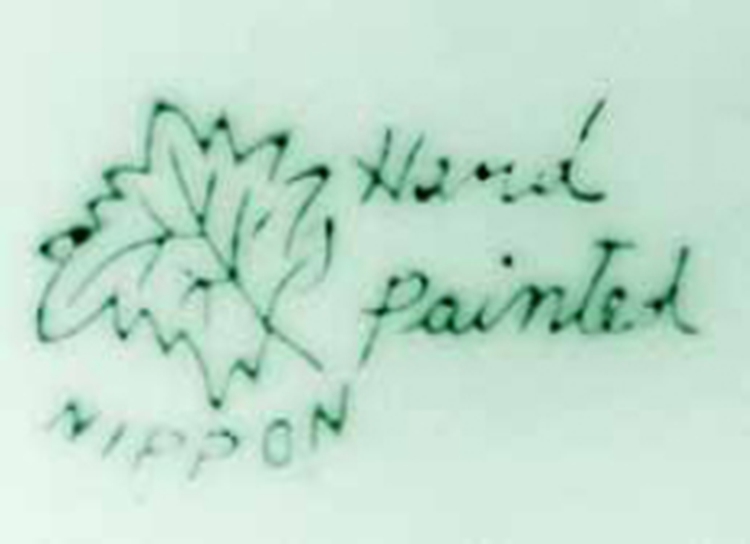
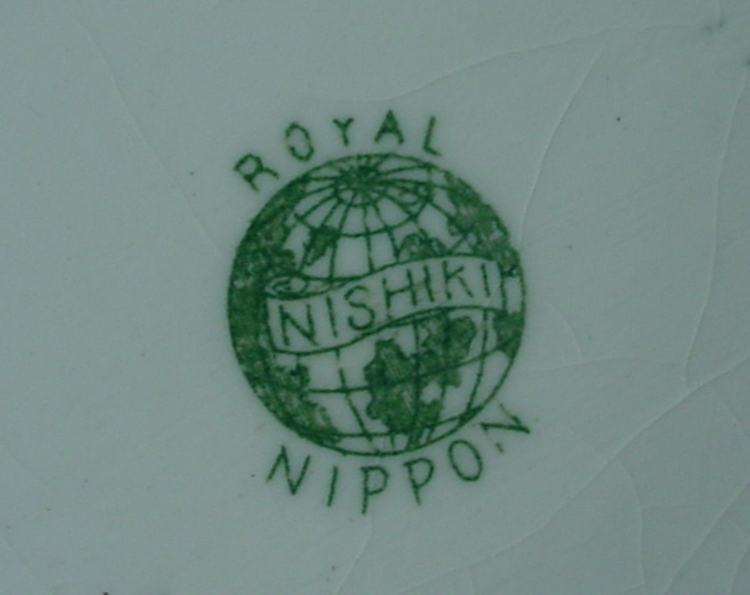
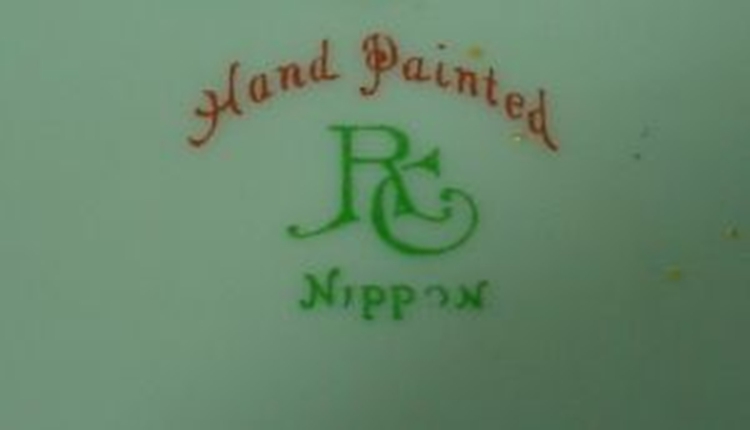
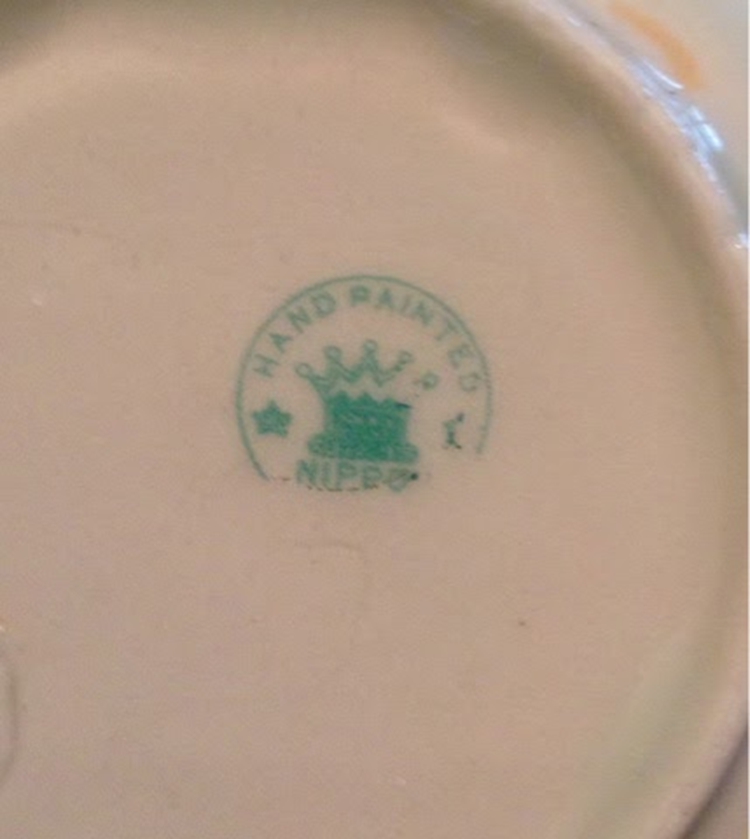
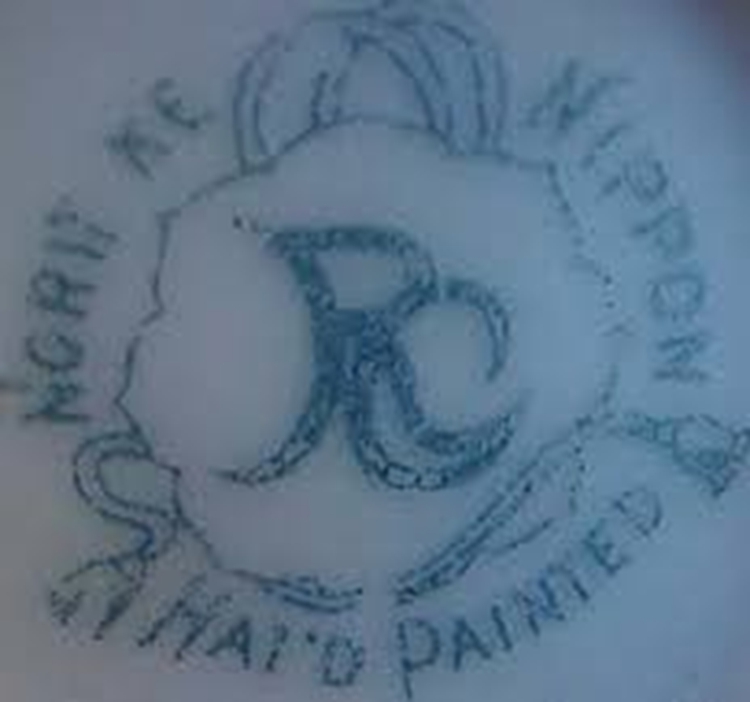
Check books, online stores, and antique websites
Various books have been written about Nippon vases and how to identify them. You can get these books online and in stores to widen your research on the pieces. Antique websites are also a great idea; you get all the details down to the price of these items.
How to Care for Nippon Vases
Before going for the big wash, the first thing you should do is line your washing area with thick, soft towels. The towels will prevent breakage or loss of essential parts in slippage. Then, with the help of soft fabric, place your vase in lukewarm water and gently rub the body.
Pay extra attention to the beaded part as it’s not the best idea for your cleaning cloth to get caught and yank off some parts in the process. For a pretty dirty piece, soak for extra minutes before washing.
Always rinse with warm water; failure to do so and using cold water may cause existing cracks and chips due to the temperature change. Make sure to place a soft surface after rinsing, preferably in a pile of clothes/towels far away from human contact.
If you’re cleaning a Moriage ware with excess dust, use a soft-bristled brush in warm soapy butter and gently scrub the gold-plated areas to avoid extra wear or scaling off. Since they are pretty heavy, we advise you to handle them with care.
FAQs
What is a Nippon Vase Worth?
An average Nippon vase ranges between $100-$550. The highly collectible ones go for $1000 and can do as high as $6000.
How do I tell if a vase is a Nippon?
Look for marks under your vases, conduct the light test and take note of their finish; legit Nippon vases usually have a glazed finish that covers all corners and angles of the item.
Where can I buy Nippon Vases?
Your best bet at getting authentic Nippon vases is at estate sales or trusted collector’s outlets. However, it would help if you took severe precautions because fake Nippon is rising these days.
Parting Words
Now that you have the necessary information on Nippon Vases and identify them. We’ve compiled extra tips for you to note during your search.
- Authentic Nippon vases have a bit of wear to their appearance; this is normal because of age. However, please beware of the shiny pieces that look too yellow with no signs of wear, these are reproduced vases, and they lack quality.
- Original Nippon vases are translucent and light when carried. Therefore, if your vase is opaque when passed under a bright light with a heavy feel when lifted, you have an inferior piece in your possession.
